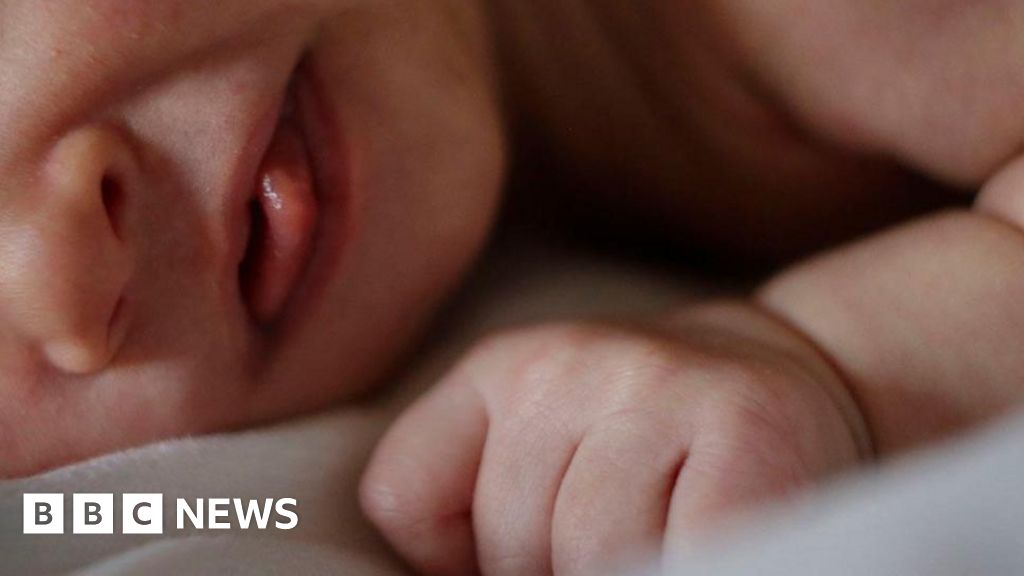Missy Elliott headlined the Lovers & Friends music festival in Las Vegas
Getty Images
Lovers & Friends, a daylong music festival, attracted dozens of artists and thousands of their fans to Las Vegas. Usher, Mariah Carey, 50 Cent, Eve, Christina Aguilera, Nelly, En Vogue, Da Brat, Busta Rhymes, and Chris Brown were among the 51 hip-hop and R&B superstars who performed on one of four stages during the 12-hour music extravaganza. Missy Elliott, a 2023 Rock & Roll Hall of Fame inductee and the first woman hip-hop artist inducted into the Songwriters Hall of Fame, closed with an electrifying showcase of many of her biggest hits.
While most artists who performed at the festival debuted in the 90s and early-2000s, the crowd was noticeably intergenerational. Nearly all the performers are musicians of color, most of them are Black. But audiences at each stage were racially diverse. The fest attracted lots of Black, Asian American, Latino, and white lovers of hip-hop and R&B.
Here’s a metaphor to describe the thing that makes this music fest most unique: It’s like the difference between the BET Awards or the Soul Train Awards versus the Grammys. R&B and hip-hop lovers are able to get more of what we want in one concentrated space, as opposed to having a limited number of options that resonate culturally or spending lots of money on an event at which Black performers are disappointingly underrepresented.
51 hip-hop and R&B artists performed at this year’s festival
Lovers & Friends
The event was impressively inclusive in other ways. To the extent possible at a jam-packed outdoor festival, it seemed reasonably inclusive of persons with physical disabilities and mobility challenges. Screens throughout the festival grounds included clear instructions for people requiring ADA accommodations. There were also ASL interpreters on each of the four stages. And there was a quiet space that allowed festival goers experiencing sensory overload to take breaks. There were numerous food options; many were inclusive of vegetarians and vegans, which is still unfortunately rare at festivals and sporting events.
Music festivals can be chaotic. This one wasn’t. Everything about it seemed remarkably organized. Getting to the venue was easy; it took less than five minutes to make it through security. Inescapably, navigating between stages at music festivals requires determination and endurance. Relatively speaking, this one wasn’t insufferably hectic and frustrating. As far as I know, every artist showed up. With only a handful of exceptions, their performances started and ended on time. Food and beverage vendors running out of menu items wasn’t a problem – if it occurred, it definitely wasn’t widespread. Because there were so many dining options and stations, lines never felt outrageously long.
Other details were obvious. Honestly, I’ve never used a cleaner portable toilet. Staff were stationed near porta potties with cleaning supplies they used to keep them tidy all day. The actual bathrooms were also quite clean. Upon arrival, I noticed lots of people were drinking tall cans of Liquid Death, which I presumed was some sort of lethal-ish beer that would surely be too potent to consume all day. I later discovered they were cans of water. As the company’s website indicates, Liquid Death prides itself on using recyclable aluminum cans as an alternative to single-use plastic bottles. Attendees were also encouraged to bring water bottles and refillable hydration packs; there were water stations throughout the venue. While the festival wasn’t entirely zero waste, just about all the food and beverage materials were recyclable, plus there were bins throughout the grounds for recyclables, composting, and other waste. Surely, festival goers like me who are committed to sustainability appreciated these details.
Crown Royal, D’ussé, Titos, and Beatbox Beverages were among the corporate sponsors. Hence, there were several alcoholic drink alternatives to Liquid Death and filtered water.
I was in Las Vegas the weekend prior to Lovers & Friends – it was nearly 90 degrees. Fortunately, cooler temperatures enhanced the music festival experience. It was about 68 degrees the whole day; perfect for an outdoor shoulder-to-shoulder event with thousands of attendees. I heard many returners talk about how much hotter it was the prior year. We all got lucky this time.
Some attendees felt the event should’ve been spread over two days. I disagree. It doesn’t make the best business sense. Having 51 artists on a single day forces choices. Approximately 20% of those who performed this year were in last year’s lineup. I suspect this will be the case in future years. Therefore, people like me who didn’t get to see some of our favorite musicians this time because it was impossible to be at two stages at once, could be easily enticed to come back and see them next time. It’s one of many aspects that makes this event’s repeat-customer profit potential high. Also, to execute the event at such a consistent level of excellence over two days would significantly increase production costs. I wouldn’t suggest messing with a single-day experience that worked so well this year.
Here’s what would greatly improve this festival: more intentionality in the inclusion of women musicians on the four stages. Nearly 73% of the acts this year were men. This was worse than last year, when men comprised 69% of the performers. In some ways, these demographics reflect the long-critiqued gender lopsidedness and the erasure of women in hip-hop. But Lovers & Friends isn’t only hip-hop. Therefore, balancing representation with women singers should be easy. Simply adding more women R&B artists to the lineup ought not be the only corrective action, though. A more deliberate effort also should be made to increase the number of women rappers at Lovers & Friends in future years.
Credit: Source link











